- Home/
- Living in your home/
- Maintaining your home/
- Damp and condensation
Damp and condensation
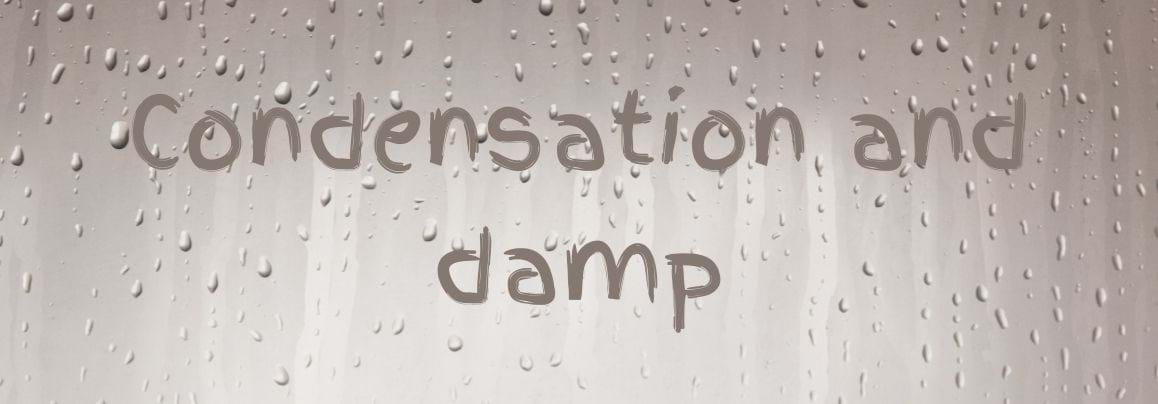
There can be many causes of damp and condensation in your home.
It's important to find out how and why problems are happening, so you can tackle the problem and stop it happening again.
Below is some information about what condensation is, and suggestions for small changes you can make to reduce it in your home.
- What causes condensation?
Condensation is formed when water droplets in the warm air in your home come into contact with colder surfaces, such as windows, external walls, and pipes.
It is common to all homes, and is created by daily activities such as cooking, bathing/showering, and washing and drying clothes. If not dealt with promptly, condensation can lead to black mould appearing, which looks unpleasant and can damage clothes and furniture.
The formation of condensation is worse in winter when there are greater variations of air temperature between indoors and outdoors. Warm humid air also allows dust mites to breed, which can make existing respiratory conditions such as asthma worse.
Damp and black mould can make your home feel like an unpleasant place to live. Most often they are caused by condensation which you can tackle or prevent with some simple changes.
- What does damp caused by condensation look like?
Key signs that you may have damp caused by condensation in your home include:
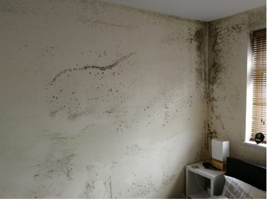
- Streaming windows
- Damp patches on walls, especially behind furniture and in corners
- Wallpaper that is starting to peel off
- Black dots on window frames
- Mould growth (usually black mould) starting to appear
- Soft furnishings and fabrics become prone to mould and mildew
- How do I reduce condensation?
You can reduce the amount of condensation, and the possibility of black mould forming, in your home by following these simple steps.
Some dos:
- Open your windows as much as possible
- Keep trickle-vents open at all times (if they're fitted in your home)
- When preparing a bath, running the cold water first, before the hot, will reduce steam by 90%
- Keep lids on pans when cooking
- Keep ventilation fans switched on (if they're fitted in your home)
- Keep kitchen and bathroom doors closed to stop moisture escaping
- Ventilate your bedroom at night while you sleep
- Keep furniture away from walls to allow air to flow around the room
- Wipe condensation from windows and windowsills as soon as possible after it forms
- Treat the first signs of mould with a mould and mildew cleaner
And some don'ts:
- Don't dry clothes on radiators
- Don't use an unvented tumble dryer
- Don't use bottled gas heaters (they produce eight pints of water per cylinder)
- Don't use your gas cooker to heat your kitchen
- Don't block permanent fans
- Don't obstruct or block air bricks inside or outside your home
- Don't block windows or trickle vents in any room
- What should I do if I find damp in my home?
Condensation damp is the most common type of damp.
Condensation damp is not a structural problem and can usually be treated by ventilating and heating the affected area.
It's created by daily activities such as cooking, bathing/showering, and washing and drying clothes. It tends to appear in colder weather when the walls of your house are colder than the air inside.
Take a look at our 'How do I reduce condensation' advice above.
Rising damp or penetrating damp
If you find rising damp or penetrating damp in your home, we can help.
Please get in touch by email, via myhomeonline or call 0300 1234 009.
You can also download this information as a leaflet:
Other types of damp
Rising damp
- What is rising damp and what causes it?
Rising damp happens when moisture travels up from the ground through the bricks up a wall, normally to the height of about one metre.
The most common causes are:
- structural damage
- a failed damp proof course (DPC)
- What does rising damp look like like?
Key signs that you may have rising damp in your home include:
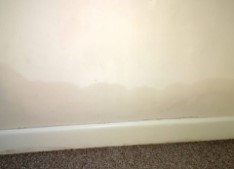
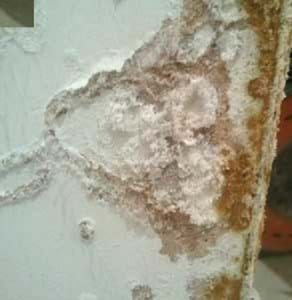
- Damp patches that start at the base of a wall and gradually move upwards
- Skirting boards or plaster that is damp or rotting
- Floor coverings, such as tiles, vinyl or carpet, that are wet and lifting
- Peeling paint or wallpaper
- White, powdery salt-like substance on a wall (hygroscopic salts)
- Yellow or brown tide marks or staining on wall
- Damp tidemark on the wall
- A damp smell
- What to do if you think you have rising damp in your home
Get in touch with our Customer Care Team as soon as possible.
Please let us know:
- what signs you've spotted
- where the damp is
- what you think has caused it.
And if possible please also send us images of the damp area.
You can get in touch by email at: enquiries@midlandsrural.org.uk
Penetrating damp
- What is penetrating damp and what causes it?
Penetrating damp is the result of water entering a home through a crack or defect in an external wall.
This can be through walls, roofs, window or door surrounds at any level of the building.
Penetrating damp, can be caused by many things, including:
- broken or loose roof tiles or slates
- blocked or leaky gutters
- cracked pointing
- damaged flashing
- damaged chimney breasts
- damaged seals
- poor quality rendering or mortar on outer walls.
- What does penetrating damp look like like?
Key signs that you may have penetrating damp in your home include:
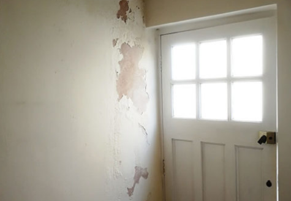
- blotchy patches on internal walls
- plaster and paint deterioration and/or blistering
- stains and salts
- rotting skirting boards or timber
- excessive moss growth on external walls
- moisture entering the brick (known as spalling) causing surface damage
- damp staining on external walls
- wet and crumbly plaster
- What to do if you think you have penetrating damp in your home
Get in touch with our Customer Care Team as soon as possible.
Please let us know:
- what signs you've spotted
- where the damp is
- what you think has caused it.
And if possible please also send us images of the damp area.
You can get in touch by email at: enquiries@midlandsrural.org.uk